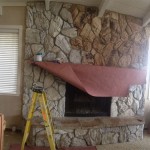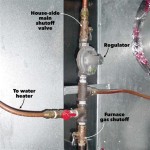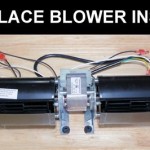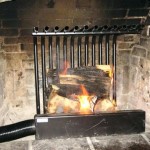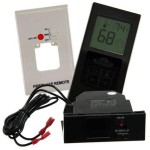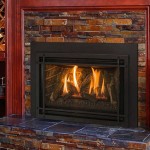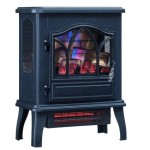Heat Surge Fireplace Repair: A Comprehensive Guide
Heat Surge fireplaces, known for their portability and supplemental heating capabilities, can occasionally experience malfunctions. Understanding common problems and repair solutions is crucial for maintaining these units and ensuring their continued functionality. This article provides a detailed guide to diagnosing and addressing typical Heat Surge fireplace issues.
Identifying Common Heat Surge Fireplace Problems
Before attempting any repairs, accurate diagnosis of the problem is essential. The initial step involves carefully observing the fireplace's behavior and identifying any unusual symptoms. Common issues reported with Heat Surge fireplaces include:
1. No Heat Output: This is perhaps the most frequent complaint. When the fireplace powers on but fails to produce heat, several factors could be responsible. These range from electrical connection issues to problems with the heating element itself.
2. Fan Malfunction: The fan is responsible for circulating the heated air. If the fan is not operating correctly – either not spinning, spinning erratically, or producing unusual noises – the fireplace's heating efficiency is substantially reduced. This can also lead to overheating of internal components.
3. Odor Emission: A burning smell or unusual odor emanating from the fireplace may indicate a problem. This can be caused by dust accumulation on the heating element, electrical component failure, or even the presence of a foreign object within the unit.
4. Electrical Issues: Problems with the power cord, plug, or internal wiring can prevent the fireplace from powering on or cause it to shut off unexpectedly. These issues require careful inspection and often necessitate the replacement of faulty parts.
5. Control Panel Malfunctions: The control panel, which typically includes buttons or a digital display, can sometimes become unresponsive or display error messages. This can be due to a variety of factors including wiring problems, faulty components on the printed circuit board, or even a simple software glitch.
6. Thermostat Problems: The thermostat regulates the temperature output of the fireplace. If the thermostat is not functioning correctly, the fireplace may overheat or fail to reach the desired temperature. Inaccurate readings and inconsistent heating are common indicators of a faulty thermostat.
7. Remote Control Issues: Many Heat Surge fireplaces come with remote controls. If the remote control stops working, try replacing the batteries first. If that doesn't resolve the issue, the problem could lie with the remote control sensor in the fireplace itself.
Troubleshooting and Repair Procedures
Once the problem has been identified, the next step is to attempt a repair. Many common Heat Surge fireplace issues can be resolved with basic troubleshooting and repair techniques. However, safety should always be the priority. Disconnect the fireplace from the power source before attempting any repairs. If you are uncomfortable working with electrical components, it is advisable to consult a qualified technician.
Addressing No Heat Output:
First, ensure that the fireplace is properly plugged into a working outlet. Test the outlet with another device to confirm that it is providing power. If the outlet is functional, check the power cord for any signs of damage, such as frayed wires or exposed conductors. If damage is present, the power cord should be replaced. Next, inspect the heating element. In some models, the heating element is visible and can be checked for continuity using a multimeter. A break in the heating element indicates that it needs to be replaced. In other models, the heating element is enclosed and may require disassembly of the unit to access. The thermal cut-off switch is designed to protect the fireplace from overheating. If the fireplace has overheated, the thermal cut-off switch may have tripped. In many cases, this switch can be reset by pressing a button located on the back or bottom of the unit. However, identifying the root cause of the overheating (e.g., a blocked fan or clogged air vents) is crucial to prevent the issue from recurring.
Repairing Fan Malfunctions:
Begin by visually inspecting the fan blades for any obstructions, such as dust, debris, or foreign objects. Clean the fan blades thoroughly using a soft brush or vacuum cleaner. If the fan blades are clear, check the fan motor for any signs of damage or wear. Listen for unusual noises coming from the motor while the fireplace is operating. A grinding or squealing sound may indicate a failing motor bearing. In some cases, the fan motor can be lubricated to improve its performance. Apply a small amount of light machine oil to the motor bearings. If lubrication does not resolve the issue, the fan motor may need to be replaced. Replacing the fan motor typically involves removing the housing surrounding the fan, disconnecting the electrical connections, and installing a new motor.
Eliminating Odor Emissions:
The initial step is to thoroughly clean the entire fireplace, both inside and out. Use a vacuum cleaner to remove any accumulated dust or debris from the heating element, fan blades, and air vents. Pay particular attention to areas where dust tends to collect, such as around the heating element and inside the blower housing. If the odor persists after cleaning, inspect the electrical components for any signs of burning or damage. Check the wiring, connectors, and circuit boards for discoloration or melted plastic. If any damaged components are found, they should be replaced by a qualified technician. In rare cases, the odor may be caused by a foreign object that has fallen into the fireplace. Carefully inspect the interior of the unit for any foreign materials, such as insects, leaves, or small pieces of debris. Remove any foreign objects that are found.
Resolving Electrical Issues:
As previously mentioned, start by inspecting the power cord and plug for any signs of damage. Replace the power cord if any damage is found. If the power cord is intact, check the internal wiring connections. Use a multimeter to test the continuity of the wires and ensure that there are no breaks or shorts. Replace any damaged wires or connectors. Inspect the circuit board for any signs of damage, such as burnt components or cracked traces. If the circuit board is damaged, it may need to be replaced. Replacing the circuit board is a complex task that should be performed by a qualified technician.
Addressing Control Panel Malfunctions:
First, check the power supply to the control panel. Ensure that the control panel is receiving the correct voltage. Use a multimeter to verify the voltage at the control panel terminals. If the power supply is correct, inspect the buttons and switches on the control panel for any signs of damage or wear. Clean the buttons and switches with a soft cloth to remove any dirt or grime. If the control panel is still not functioning correctly, it may need to be replaced. Replacing the control panel typically involves removing the housing surrounding the control panel, disconnecting the electrical connections, and installing a new control panel. This may require some degree of technical skill.
Correcting Thermostat Problems:
The thermostat's sensor should be checked for proper placement and cleanliness. Dust accumulating around the sensor can insulate it, leading to inaccurate readings. If the thermostat can be calibrated, follow the manufacturer's instructions to adjust the temperature setting. If calibration is not possible or does not resolve the issue, the thermostat may need to be replaced. Thermostat replacement involves disconnecting the wiring and installing a new unit, ensuring proper connections are made.
Fixing Remote Control Issues:
Begin with the simplest solution: replace the batteries in the remote control. Ensure that the batteries are inserted correctly and are of the proper voltage. If new batteries do not solve the problem, check the remote control sensor on the fireplace. Clean the sensor with a soft cloth to remove any dust or debris. Try pointing the remote control directly at the sensor and pressing the buttons. If the remote control still does not work, the problem may lie with the remote control itself or the sensor in the fireplace. In this case, you may need to replace the remote control or have the sensor repaired by a qualified technician. The sensor may need reprogramming.
Preventative Maintenance for Heat Surge Fireplaces
Preventative maintenance is crucial for extending the lifespan and ensuring the efficient operation of a Heat Surge fireplace. Regular cleaning and inspection can help identify potential problems before they escalate into major repairs.
Regular Cleaning: The most important aspect of preventative maintenance is regular cleaning. Dust and debris can accumulate on the heating element, fan blades, and air vents, reducing the fireplace's heating efficiency and potentially causing overheating. Use a vacuum cleaner with a brush attachment to remove dust and debris from all accessible areas of the fireplace. Pay particular attention to the heating element, fan blades, and air vents.
Air Vent Maintenance: Ensure that the air vents are not blocked by furniture, curtains, or other objects. Blocked air vents can restrict airflow, causing the fireplace to overheat. Maintain a clear space around the fireplace to allow for proper ventilation.
Cord Inspection: Regularly inspect the power cord for any signs of damage, such as frayed wires or exposed conductors. Replace the power cord immediately if any damage is found. A damaged power cord can pose a fire hazard.
Professional Servicing: Consider having the fireplace professionally serviced at least once a year. A qualified technician can inspect the internal components, identify potential problems, and perform any necessary repairs or adjustments. Professional servicing can help extend the lifespan of the fireplace and ensure its safe and efficient operation.
Proper Storage: If the Heat Surge fireplace is not being used, store it in a clean, dry place. Cover the fireplace with a dust cover to protect it from dust and debris. Avoid storing the fireplace in damp or humid environments, as this can lead to corrosion and other problems.
Following Manufacturer's Instructions: Always follow the manufacturer's instructions for operating and maintaining the Heat Surge fireplace. Refer to the owner's manual for specific recommendations on cleaning, maintenance, and troubleshooting.
When to Seek Professional Assistance
While many Heat Surge fireplace problems can be resolved with basic troubleshooting and repair techniques, some issues require professional assistance. If you are uncomfortable working with electrical components or if you are unable to diagnose or repair the problem yourself, it is best to consult a qualified technician. Certain situations always warrant professional intervention:
If the fireplace is producing smoke or sparks, disconnect it from the power source immediately and contact a qualified technician. Smoke and sparks are signs of a serious electrical problem that could pose a fire hazard. If you smell burning plastic or other unusual odors, disconnect the fireplace from the power source and contact a qualified technician. Burning odors may indicate a problem with the electrical components or wiring. If you are unsure about how to repair a specific problem, it is best to err on the side of caution and contact a qualified technician. Attempting to repair a problem without proper knowledge or experience could damage the fireplace or put you at risk of electrical shock.
A qualified appliance technician has the knowledge, skills, and tools necessary to diagnose and repair complex Heat Surge fireplace problems. They can also ensure that the fireplace is repaired safely and correctly.
By understanding common Heat Surge fireplace problems, implementing preventative maintenance measures, and knowing when to seek professional assistance, owners can ensure the continued functionality and longevity of their heating appliance.

How To Repair Your Heat Surge Fireplace

Home Heat Surge

How To Repair Your Heat Surge Fireplace

Home Heat Surge

Commercial Chemical Vacuum Medic Heat Surge Parts

Repair Heat Surge X5c Portable Electric Fireplace Heater Amish Cabinet

Heat Surge Shutdown Bypass Fix Floor Control Models Versions

Parts Or Repair Heat Surge Mini Glo Portable Heater Electric Fireplace 1200w

Heat Surge Fix Update Fixing The Beep Shutdown

Amish Heat Surge Miracle Heater Scam Lee Devlin S Website

